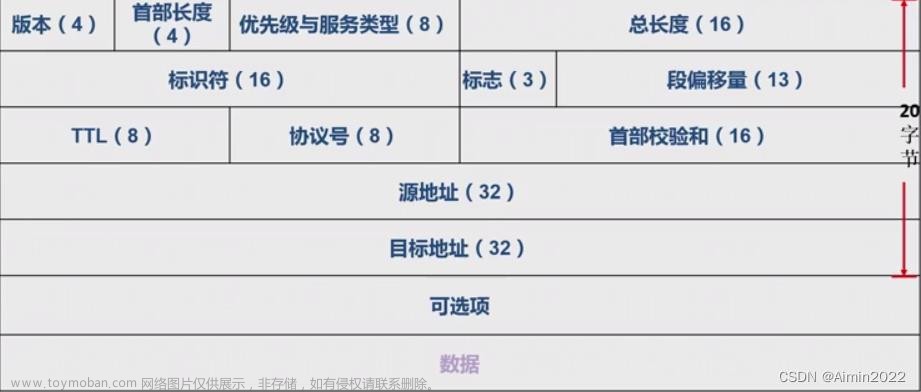一、负载均衡概述
支持轮询、随机、一致性hash和最小活跃数等。
1、轮询
① sequences:内部的序列计数器
② 服务器接口方法权重一样:(sequences+1)%服务器的数量=(决定调用)哪个服务器的服务。
③ 服务器接口方法权重不一样:找到最大权重(权重数)%(sequences+1),然后找出权重比该取模后的值大服务器列表,最后进行【①】所述。
2、随机
统计服务器上该接口的方法权重总和,然后对这个总和随机nextInt一下,看生成的随机数落到哪个段内,就调用哪个服务器上的该服务。
3、一致性hash
保证了同样的请求(参数)将会落到同一台服务器上。
4、最小活跃数
每个接口和接口方法都对应一个RpcStatus,记录它们的活跃数、失败等相关统计信息,调用时活跃数+1,调用结束时活跃数-1,所以活跃值越大,表明该提供者服务器的该接口方法耗时越长,而消费能力强的提供者接口往往活跃值很低。最少活跃负载均衡保证了“慢”提供者能接收到更少的服务器调用。
二、负载均衡策略配置
1、多注册中心集群负载均衡

2、Cluster Invoker
支持的选址策略如下(dubbo2.7.5+ 版本,具体使用请参见文档)
2-1、指定优先级
<!-- 来自 preferred=“true” 注册中心的地址将被优先选择,
只有该中心无可用地址时才 Fallback 到其他注册中心 -->
<dubbo:registry address="zookeeper://${zookeeper.address1}" preferred="true" />
2-2、同zone优先
<!-- 选址时会和流量中的 zone key 做匹配,流量会优先派发到相同 zone 的地址 -->
<dubbo:registry address="zookeeper://${zookeeper.address1}" zone="beijing" />
2-3、权重轮询
<!-- 来自北京和上海集群的地址,将以 10:1 的比例来分配流量 -->
<dubbo:registry id="beijing" address="zookeeper://${zookeeper.address1}" weight=”100“ />
<dubbo:registry id="shanghai" address="zookeeper://${zookeeper.address2}" weight=”10“ />
三、负载均衡解读
(1)负载均衡:AbstractClusterInvoker.invoke(final Invocation invocation)方法
@Override
public Result invoke(final Invocation invocation) throws RpcException {
//...... 省略代码
List<Invoker<T>> invokers = list(invocation);
LoadBalance loadbalance = initLoadBalance(invokers, invocation);
RpcUtils.attachInvocationIdIfAsync(getUrl(), invocation);
return doInvoke(invocation, invokers, loadbalance);
}
/** 获取负载均衡的实现方法,未配置时默认random */
protected LoadBalance initLoadBalance(List<Invoker<T>> invokers, Invocation invocation) {
if (CollectionUtils.isNotEmpty(invokers)) {
return ExtensionLoader.getExtensionLoader(LoadBalance.class)
.getExtension(invokers.get(0).getUrl()
.getMethodParameter(RpcUtils.getMethodName(invocation),
LOADBALANCE_KEY, DEFAULT_LOADBALANCE));
} else {
return ExtensionLoader.getExtensionLoader(LoadBalance.class)
.getExtension(DEFAULT_LOADBALANCE);
}
}
(2)实现入口:AbstractClusterInvoker.doSelect(…)
① 在dubbo中,所有负载均衡均继承 AbstractLoadBalance 类,该类实现了LoadBalance接口,并封装了一些公共的逻辑。
/** 1. LoadBalance.java接口 */
@SPI(RandomLoadBalance.NAME)
public interface LoadBalance {
/**
* select one invoker in list.
*
* @param invokers invokers.
* @param url refer url
* @param invocation invocation.
* @return selected invoker.
*/
@Adaptive("loadbalance")
<T> Invoker<T> select(List<Invoker<T>> invokers, URL url, Invocation invocation) throws RpcException;
}
/** 2. AbstractLoadBalance.java 抽象类 */
@Override
public <T> Invoker<T> select(List<Invoker<T>> invokers, URL url, Invocation invocation) {
if (CollectionUtils.isEmpty(invokers)) {
return null;
}
// 如果invokers列表中仅一个Invoker,直接返回即可,无需进行负载均衡
if (invokers.size() == 1) {
return invokers.get(0);
}
// 调用doSelect方法进行负载均衡,该方法为抽象方法,由子类实现
return doSelect(invokers, url, invocation);
}
protected abstract <T> Invoker<T> doSelect(List<Invoker<T>> invokers, URL url, Invocation invocation);
/** 2-1. 公共方法,权重计算逻辑 */
protected int getWeight(Invoker<?> invoker, Invocation invocation) {
int weight;
URL url = invoker.getUrl();
// Multiple registry scenario, load balance among multiple registries.
if (REGISTRY_SERVICE_REFERENCE_PATH.equals(url.getServiceInterface())) {
weight = url.getParameter(REGISTRY_KEY + "." + WEIGHT_KEY, DEFAULT_WEIGHT);
} else {
// 从url中获取权重 weight配置值
weight = url.getMethodParameter(invocation.getMethodName(), WEIGHT_KEY, DEFAULT_WEIGHT);
if (weight > 0) {
// 获取服务提供者启动时间戳
long timestamp = invoker.getUrl().getParameter(TIMESTAMP_KEY, 0L);
if (timestamp > 0L) {
// 计算服务提供者运行时长
long uptime = System.currentTimeMillis() - timestamp;
if (uptime < 0) {
return 1; // 未启动直接返回权重为1
}
// 获取服务预热时间,默认为10分钟
int warmup = invoker.getUrl().getParameter(WARMUP_KEY, DEFAULT_WARMUP);
// 如果服务运行时间小于预热时间,则重新计算服务权重,即降级
if (uptime > 0 && uptime < warmup) {
weight = calculateWarmupWeight((int)uptime, warmup, weight);
}
}
}
}
return Math.max(weight, 0);
}
// 2-2. 重新计算服务权重
static int calculateWarmupWeight(int uptime, int warmup, int weight) {
// 计算权重,下面代码逻辑上形似于 (uptime / warmup) * weight
// 随着服务运行时间 uptime 增大,权重计算值 ww 会慢慢接近配置值 weight
int ww = (int) ( uptime / ((float) warmup / weight));
return ww < 1 ? 1 : (Math.min(ww, weight));
}
注:
select 方法的逻辑比较简单,首先会检测 invokers 集合的合法性,然后再检测 invokers 集合元素数量。如果只包含一个 Invoker,直接返回该 Inovker 即可。如果包含多个 Invoker,此时需要通过负载均衡算法选择一个 Invoker。具体的负载均衡算法由子类实现。
权重的计算主要用于保证当服务运行时长小于服务预热时间时,对服务进行降权,避免让服务在启动之初就处于高负载状态。服务预热是一个优化手段,与此类似的还有 JVM 预热。主要目的是让服务启动后“低功率”运行一段时间,使其效率慢慢提升至最佳状态。
配置方式(默认100):dubbo.provider.weight=300dubbo.provider.weight=300
② RandomLoadBalance 加权随机负载均衡
算法思路:根据权重比,随机选择哪台服务器,如:servers=[A,B,C],weights = [5, 3, 2],权重和为10,调用A的次数约有50%,B有30%,C有20%。
@Override
protected <T> Invoker<T> doSelect(List<Invoker<T>> invokers, URL url, Invocation invocation) {
// Number of invokers
int length = invokers.size();
// 判断是否需要权重负载均衡
if (!needWeightLoadBalance(invokers,invocation)){
return invokers.get(ThreadLocalRandom.current().nextInt(length));
}
// Every invoker has the same weight?
boolean sameWeight = true;
// the maxWeight of every invokers, the minWeight = 0 or the maxWeight of the last invoker
int[] weights = new int[length];
// The sum of weights
int totalWeight = 0;
// ① 计算总权重,totalWeight;② 检测每个服务提供者的权重是否相同
for (int i = 0; i < length; i++) {
int weight = getWeight(invokers.get(i), invocation);
// Sum
totalWeight += weight;
// save for later use
// 如果权重分别为5,3,2,则weights[0]=5,weights[1]=8,weights[2]=10
weights[i] = totalWeight;
// 判断每个服务权重是否相同,如果不相同则sameWeight置为false
if (sameWeight && totalWeight != weight * (i + 1)) {
sameWeight = false;
}
}
// 各提供者服务权重不一样时,计算随机数落在哪个区间上
if (totalWeight > 0 && !sameWeight) {
// If (not every invoker has the same weight & at least one invoker's weight>0), select randomly based on totalWeight.
// 随机获取一个[0, totalWeight]区间内的随机的数字
int offset = ThreadLocalRandom.current().nextInt(totalWeight);
// Return a invoker based on the random value.
for (int i = 0; i < length; i++) {
// weights[0]=5,offset=[0, 5)
// weights[1]=8,offset=[5, 8)
// weights[2]=10,offset=[8, 10)
if (offset < weights[i]) {
return invokers.get(i);
}
}
}
// If all invokers have the same weight value or totalWeight=0, return evenly.
// 如果所有服务提供者权重值相同,此时直接随机返回一个即可
return invokers.get(ThreadLocalRandom.current().nextInt(length));
}
注:RandomLoadBalance的算法比较简单,多次请求后,能够按照权重进行“均匀“分配。调用次数少时,可能产生的随机数比较集中,此缺点并不严重,可以忽略。它是一个高效的负载均衡实现,因此Dubbo选择它作为缺省实现。
③ LeastActiveLoadBalance 加权最小活跃数负载均衡
活跃调用数越小,表明该服务提供者效率越高,单位时间内可处理更多的请求。此时应优先将请求分配给该服务提供者。
在具体实现中,每个服务提供者对应一个活跃数 active。初始情况下,所有服务提供者活跃数均为0。每收到一个请求,活跃数加1,完成请求后则将活跃数减1。
除了最小活跃数,LeastActiveLoadBalance 在实现上还引入了权重值。所以准确的来说,LeastActiveLoadBalance 是基于加权最小活跃数算法实现的。文章来源:https://www.toymoban.com/news/detail-650748.html
@Override
protected <T> Invoker<T> doSelect(List<Invoker<T>> invokers, URL url, Invocation invocation) {
// Number of invokers
int length = invokers.size();
// The least active value of all invokers
// 最小活跃数
int leastActive = -1;
// The number of invokers having the same least active value (leastActive)
// 具有相同“最小活跃数”的服务提供者
int leastCount = 0;
// The index of invokers having the same least active value (leastActive)
// leastIndexes 用于记录具有相同“最小活跃数”的 Invoker 在 invokers 列表中的下标信息
int[] leastIndexes = new int[length];
// the weight of every invokers
int[] weights = new int[length];
// The sum of the warmup weights of all the least active invokers
int totalWeight = 0;
// The weight of the first least active invoker
// 第一个最小活跃数的 Invoker 权重值,用于与其他具有相同最小活跃数的 Invoker 的权重进行对比,
// 以检测是否“所有具有相同最小活跃数的 Invoker 的权重”均相等
int firstWeight = 0;
// Every least active invoker has the same weight value?
// 表示各服务的权重是否相同
boolean sameWeight = true;
// Filter out all the least active invokers
for (int i = 0; i < length; i++) {
Invoker<T> invoker = invokers.get(i);
// Get the active number of the invoker
// 获取invoker对应的活跃数
int active = RpcStatus.getStatus(invoker.getUrl(), invocation.getMethodName()).getActive();
// Get the weight of the invoker's configuration. The default value is 100.
// 获取权重
int afterWarmup = getWeight(invoker, invocation);
// save for later use
weights[i] = afterWarmup;
// If it is the first invoker or the active number of the invoker is less than the current least active number
// 发现更小的活跃数,重新开始
if (leastActive == -1 || active < leastActive) {
// Reset the active number of the current invoker to the least active number
// 使用当前活跃数 active 更新最小活跃数 leastActive
leastActive = active;
// Reset the number of least active invokers
leastCount = 1;
// Put the first least active invoker first in leastIndexes
// 记录当前下标值到 leastIndexes 中
leastIndexes[0] = i;
// Reset totalWeight
totalWeight = afterWarmup;
// Record the weight the first least active invoker
firstWeight = afterWarmup;
// Each invoke has the same weight (only one invoker here)
sameWeight = true;
// If current invoker's active value equals with leaseActive, then accumulating.
// 当前 Invoker 的活跃数 active 与最小活跃数 leastActive 相同
} else if (active == leastActive) {
// Record the index of the least active invoker in leastIndexes order
leastIndexes[leastCount++] = i;
// Accumulate the total weight of the least active invoker
// 累加权重
totalWeight += afterWarmup;
// If every invoker has the same weight?
// 检测当前 Invoker 的权重与 firstWeight 是否相等,不相等则将 sameWeight 置为 false
if (sameWeight && afterWarmup != firstWeight) {
sameWeight = false;
}
}
}
// Choose an invoker from all the least active invokers
// 1. 当只有一个 Invoker 具有最小活跃数,此时直接返回该 Invoker 即可
if (leastCount == 1) {
// If we got exactly one invoker having the least active value, return this invoker directly.
return invokers.get(leastIndexes[0]);
}
// 2. 有多个 Invoker 具有相同的最小活跃数,但它们之间的权重不同
if (!sameWeight && totalWeight > 0) {
// If (not every invoker has the same weight & at least one invoker's weight>0), select randomly based on
// totalWeight.
// 随机生成一个 [0, totalWeight) 之间的数字
int offsetWeight = ThreadLocalRandom.current().nextInt(totalWeight);
// Return a invoker based on the random value.
for (int i = 0; i < leastCount; i++) {
// 获取权重数组的下标
int leastIndex = leastIndexes[i];
// 随机权重 - 具有最小活跃数的 Invoker 的权重值
offsetWeight -= weights[leastIndex];
if (offsetWeight < 0) { // 与RandomLoadBalance一致,权重越大调用的次数越多
return invokers.get(leastIndex);
}
}
}
// If all invokers have the same weight value or totalWeight=0, return evenly.
// 如果权重相同或权重为0时,随机返回一个 Invoker
return invokers.get(leastIndexes[ThreadLocalRandom.current().nextInt(leastCount)]);
}
④ ConsistentHashLoadBalance
cache-1、cache-2、cache-3、cache-4分别为不同的节点
根据IP或者其他信息为缓存节点生成一个hash,并将这个hash投射到[0,2^32 - 1] 的圆环上。当有查询或写入请求时,则为缓存项的key生成一个hash值。然后查找第一个大于或等于该hash值的缓存节点,并到这个节点中查询或写入缓存项。
如果当前节点挂了,则在下一次查询或写入缓存时,为缓存项查找另一个大于或其hash值的缓存节点即可。
如下图,每个节点在圆环上占据一个位置,如果缓存项的key的hash值小于缓存节点hash值,则到该缓存节点中存储或读取缓存项。
比如下面绿色点对应的缓存项将会被存储到 cache-2 节点中。由于 cache-3 挂了,原本应该存到该节点中的缓存项最终会存储到 cache-4 节点中。
⑤ RoundRobinLoadBalance
轮询:是指将请求轮流分配给每台服务器。
例如:有三台服务器A、B、C,我们将第一个请求分配给A服务器,第二个请求分配给B服务器,第三个请求分配给C服务器,第四个请求再次分配给A服务器,如此循环,这个过程叫做轮询(轮询是一种无状态负载均衡算法)。适用于每台服务器性能相近的场景下。
轮询加权:对每台性能不一样的服务器进行加权处理,如服务器A、B、C的权重分别为5:2:1时,在8次请求中,服务器A将收到5次请求、B收到2次请求、C收到一次请求(请求次数越多,每台服务器得到的请求数,接近服务器的权重比)。文章来源地址https://www.toymoban.com/news/detail-650748.html
@Override
protected <T> Invoker<T> doSelect(List<Invoker<T>> invokers, URL url, Invocation invocation) {
// key = [group/]path[:version].methodName;注:path = com.jyt.*.service.接口名
String key = invokers.get(0).getUrl().getServiceKey() + "." + invocation.getMethodName();
// 获取key对应值,如果key的值不存在,则将第二个参数的返回值存入并返回
ConcurrentMap<String, WeightedRoundRobin> map = methodWeightMap.computeIfAbsent(key, k -> new ConcurrentHashMap<>());
int totalWeight = 0;
long maxCurrent = Long.MIN_VALUE;
long now = System.currentTimeMillis();
Invoker<T> selectedInvoker = null;
WeightedRoundRobin selectedWRR = null;
// 遍历服务提供者
for (Invoker<T> invoker : invokers) {
// dubbo://11.1.1.109:21001/com.jyt.*.service.类名
String identifyString = invoker.getUrl().toIdentityString();
// 获取当前服务提供者的权重
int weight = getWeight(invoker, invocation);
// 根据identifyString获取当前提供者对应的权重,如果不存在则使用第二个参数返回值,并返回
WeightedRoundRobin weightedRoundRobin = map.computeIfAbsent(identifyString, k -> {
WeightedRoundRobin wrr = new WeightedRoundRobin();
wrr.setWeight(weight);
return wrr;
});
// 如果提供者的权重被修改了,则更新weightedRoundRobin的权重值
if (weight != weightedRoundRobin.getWeight()) {
// weight changed
weightedRoundRobin.setWeight(weight);
}
// current加上weight并获取结果(初始的current为0)
long cur = weightedRoundRobin.increaseCurrent();
/**
* 如果A服务权重weight=500,B权重weight=100时,totalWeight = 600,初始cur=0;服务调用场景
* 第一次:A服务器:cur=weight + curA = 500,cur > maxCurrent,所以maxCurrent = curA = 500
* B服务器:cur=weight + curB = 100 <= maxCurrent(500为true);故走A服务器,即curA = curA - 600 = -100
*
* 第二次:A服务器:cur=weight + curA = 400,cur > maxCurrent,所以maxCurrent = curA = 400
* B服务器:cur=weight + curB = 200 <= maxCurrent(400为true);故走A服务器,即curA = curA - 600 = -200
*
* 第三次:A服务器:cur=weight + curA = 300,cur > maxCurrent,所以maxCurrent = curA = 300
* B服务器:cur=weight + curB = 300 <= maxCurrent(300为true);故走A服务器,即curA = curA - 600 = -300
*
* 第四次:A服务器:cur=weight + curA = 200,cur > maxCurrent,所以maxCurrent = curA = 200
* B服务器:cur=weight + curB = 400 <= maxCurrent(200为false);故走B服务器,即curB = curB - 600 = -200
*
* 第五次:A服务器:cur=weight + curA = 700,cur > maxCurrent,所以maxCurrent = curA = 700
* B服务器:cur=weight + curB = -100 <= maxCurrent(700为true);故走A服务器,即curA = curA - 600 = 100
*
* 第六次:A服务器:cur=weight + curA = 600,cur > maxCurrent,所以maxCurrent = curA = 600
* B服务器:cur=weight + curB = 0 <= maxCurrent(600为true);故走A服务器,即curA = curA - 600 = 0
*
* ... ... 如此循环:A、A、A、B、A、A
*/
weightedRoundRobin.setLastUpdate(now);
// 判断是否比最大的值大
if (cur > maxCurrent) {
// 如果大,则将当前服务提供者置为本次服务提供者
maxCurrent = cur;
selectedInvoker = invoker;
selectedWRR = weightedRoundRobin;
}
// 权重累计
totalWeight += weight;
}
// 当两者大小不一致时,map中可能会存在一些已经下线的服务,本次剔除一些很久节点信息
if (invokers.size() != map.size()) {
map.entrySet().removeIf(item -> now - item.getValue().getLastUpdate() > RECYCLE_PERIOD);
}
// 如果存在选择好的提供者,则改变他的current值 - totalWeight;
if (selectedInvoker != null) {
selectedWRR.sel(totalWeight);
return selectedInvoker;
}
// should not happen here
return invokers.get(0);
}
到了这里,关于中间件(二)dubbo负载均衡介绍的文章就介绍完了。如果您还想了解更多内容,请在右上角搜索TOY模板网以前的文章或继续浏览下面的相关文章,希望大家以后多多支持TOY模板网!














